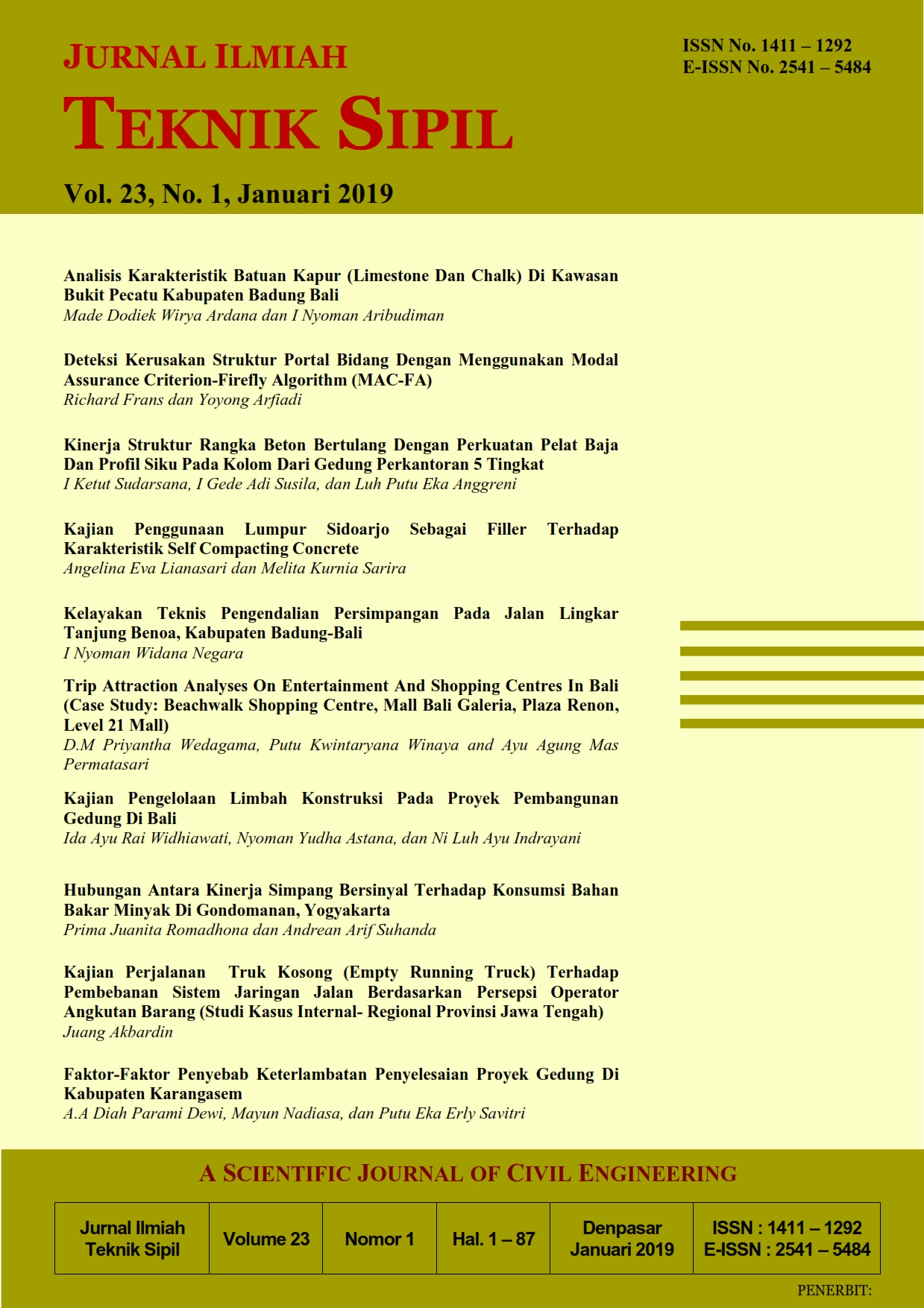TRIP ATTRACTION ANALYSES ON ENTERTAINMENT AND SHOPPING CENTRES IN BALI (CASE STUDY : BEACHWALK SHOPPING CENTRE, MALL BALI GALERIA, PLAZA RENON, LEVEL 21 MALL)
Abstract
Trip attraction model is required to analyse trip characteristics to/from a certain land use so that they are well planned in the future. This study aims to model trip attractions, and to predict the number of existing and for the next 5 years (in 2023 ) of trips to shopping and entertainment centres. The study results show that the trip attraction models to shopping and entertainment centres are Y1 = 283.369 + 0.001 X1 with R2 = 0.772 and Y2 = 366.823 + 2.958 X5 with R2 = 0.974 during peak hours on weekdays. For one day on weekdays, Y3 = 198.98 + 0.422 X3 with R2 = 0.910 and Y4 = 1178.738 + 102.354 X5 with R2 = 0.963. During peak hours on weekends, Y5 = 116.98 + 0.01 X1 with R2 = 0.920 and Y6 = 159.738 + 0.001 X1 with R2 = 0.920. For one day during weekend, Y7 = 18927.554 -0.555 X3 with R2 = 0.929 and Y8 = 764.654 + 85.538 X5 with R2 = 0.972. The study estimates the average trip attractions to shopping and entertainment centres for the next 5 years during peak hours on weekdays are 319 pcu/hour and 451 passengers/hour. For one day trips are predicted as of 8,656 pcu/day and 4,076 passengers/day. Similarly, during peak hours on weekend trips are predicted as of 472 pcu/hour and 116 passengers/hour, for one day are 803 pcu/day with 3,185 passengers/day.





